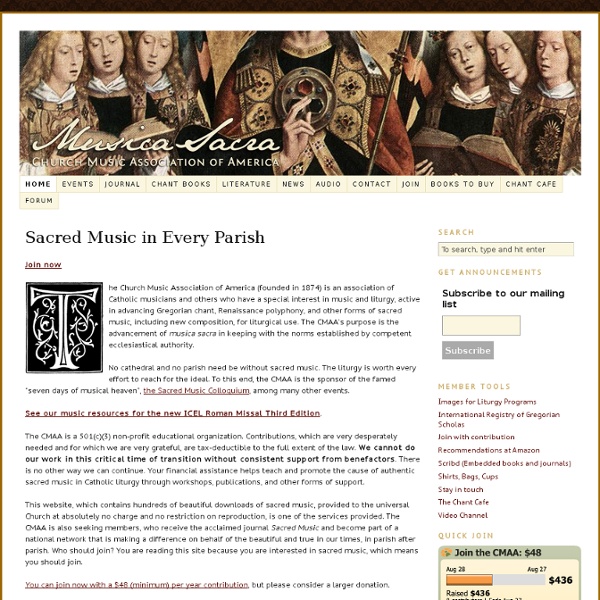



National Association of Pastoral Musicians National Association of Pastoral Musicians Catholic Artists Directory The Catholic Liturgical Library Fra Angelico Institute for the Sacred Arts | The mission of The Fra Angelico Institute is to deepen the prayer life of its participants by evangelizing the truth, goodness, and beauty of God through the understanding and creation of sacred art. Australian Pastoral Musicians Network - Welcome Daniel Mitsui Art In my religious drawings, I attempt to be faithful to the instructions of the Second Nicene Council, which stated that the composition of religious imagery is not left to the initiative of artists, but is formed upon principles laid down by the Catholic Church and by religious tradition.... The execution alone belongs to the painter, the selection and arrangement of subject belongs to the Fathers. In Gothic art, the iconographic tradition that stretches back to the apostolic age was expressed with extraordinary vigor, fidelity and theological sophistication. Another strong interest of mine is the Northumbro-Irish art of the 6-9th centuries, with its lacertine animals, intricate knotwork and rune-like calligraphy. One of my most prestigious projects was completed in 2011, when the Vatican commissioned me to illustrate a new edition of the Roman Pontifical. Drawings and prints may be purchased using the buttons below. LETTERPRESS BROADSIDES from MILLEFLEUR PRESS
Liturgy Brisbane The Crisis of Contemporary Catholic Art and Literature: 4 Reasons Why You Should Care The Crisis of Contemporary Catholic Art and Literature: 4 Reasons Why You Should Care by Catherine on 2012-06-22 • 3:04 am • 43 Comments Listers, think of all your favorite Catholic authors (Chesterton, Tolkien, O’Connor, Percy, Greene, Powers). Besides being Catholic, what other common similarity do they all share? The answer is: They’re all dead! Flannery O’Connor acknowledges the plight of the contemporary Catholic author. But I don’t believe that we shall have great religious fiction until we have again that happy combination of believing artist and believing society. I agree with O’Connor that this difference in ideology between author and reader is one of the reasons for the faithful Catholic artist’s plight. #1 The World Shouldn’t Define What It Means to Be Catholic For some reason, in the 20th and 21st century, we have allowed the media to define what it means to be Catholic for the rest of the world. the right way. The Ecstasy of St. Shortlink:
The Clearances Influence on Australia The effects of industrialization, destitution, and commercial depressions in promoting emigration to Australia were obvious from the early 1830s. The most remarkable feature of the emigration was its widespread nature. No corner of Scotland was unaffected by it. The availability of free or assisted passages to Australia after 1832 was partly responsible, by itself the depression would not have been sufficient to secure this result, which was realised only because the ‘Government’ and the later ‘Colonial’ bounty systems came into effect, for this was to be largely a working-class emigration, and the considerable proportion of the emigrants who came from the Highlands and islands included many who were near to complete destitution but 'bounty systems' introduced free or assisted passages. In 1837, an additional scheme, encouraged the immigration of skilled agricultural workers as well as unmarried women and mechanics, came into operation.
Behold, the Ancient Christian Art of the Roman Catacombs The ancient Romans traditionally cremated their dead. Christians, on the other hand, have traditionally buried their dead unburned as a sign of their belief in the coming resurrection of the body. But in the 2nd century A.D., the burial of unburnt remains started to become fashionable for Romans. [See also: Haunting: Get Lost in Rome’s Ancient Christian Catacombs With Google StreetView] [See also: 1,782 Years Old: Inside the Oldest Church in the World] These underground tombs, or catacombs, were most famously used by early Christians for burying their dead, particularly martyrs, and sometimes for celebrating the divine liturgy. Here is an example of an underground passageway of the catacombs: These narrow passageways sometimes open up to large rooms. Amazingly, despite their importance in the life of the early Church, the early Christian catacombs were lost and forgotten for many centuries. Below are 15 examples. Jesus healing the bleeding woman Jesus with his 12 Apostles The Good Shepherd